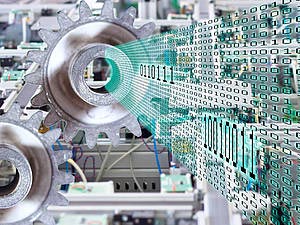April 12, 2016
Cyber-physical systems bring technological progress to next level
Growing interaction between cyber space and physical world | Cyber-physical systems pioneer Thomas Henzinger co-chairs CPS Week

The physical world contains many man-made artifacts that predate microelectronics. In the previous century, such artifacts as buildings, transportation vehicles and vessels, household and medical devices were mechanical and electrical objects, made from concrete, plastics, and metals. Today all of them are increasingly becoming special-purpose computers that are not recognizable as such. This may be obvious in the smart phone, but also a state-of-the-art automobile contains hundreds of networked processors and the value of the software in a modern car exceeds the value of all of its material parts. Even kitchens, hospitals, and entire cities go “smart”, using cyber-physical systems to increase energy efficiency, transportation performance, and safety.
The name “cyber-physical systems” was chosen to suggest the growing symbiosis between cyber space and the physical world. Cyber space is the realm of bits and bytes, created by microelectronics and software programs, some of which have reached enormous sophistication and importance to modern society, such as the word processor or the Internet. Cyber space and the physical world have started to interact, pervading our daily lives and bringing technological progress to the next level. Cyber-physical systems can now be found in the private home, the office building, and the factory hall; the car, the train, and the airplane; the telephone, the TV, and the refrigerator; the life support station, the x-ray machine, and the pacemaker.
There are, of course, stringent requirements on cyber-physical systems: while it may be merely inconvenient if a desktop or laptop computer reboots in the middle of a task, it would be catastrophic if the computer that controls an airplane in midair does likewise. Besides the enormous demands on reliability, such systems need to be robust to cope with unforeseen circumstances and secure to safeguard against malicious attacks. Discovering design principles for cyber-physical systems that meet their demands on trustworthiness is a fascinating research challenge, which touches all stages from abstract mathematical investigations to industrial product development.
At Institute of Science and Technology Austria (IST Austria), a research group led by Thomas A. Henzinger focuses on the underlying mathematical challenges. The modeling, simulation, construction, and analysis of cyber-physical systems requires new mathematical formalisms which are equally adept to represent the discrete events governing the flow of bits in cyber space and the continuous processes of the physical world – the change in the temperature of a room, in the speed of a car, or in the pulse rate of a human heart. This new kind of math must marry the discrete with the continuous.
Some 25 years ago, Professor Henzinger accomplished pioneering research in the field of cyber-physical systems, discovering basic properties of this new kind of math. His theory of hybrid automata from the early 1990s, cited thousands of times, underlies many of today’s practical developments in cyber-physical systems. This illustrates vividly the timeline for basic research: a quarter century from purely theoretical ideas of a few scientists to industrial applications that literally change the world in which we live.
The internationally recognized computer scientist, who has been IST Austria President since 2008, acts as co-chair of this week’s CPS Week. Jointly organized by IST Austria, the Vienna University of Technology, and AIT Austrian Institute of Technology, the four-day conference is held in Vienna from April 11-14, 2016, with about one thousand visitors from all over the world. Henzinger comments: “The CPS Week not only gives you the unique opportunity to meet leading scientists and experts working in cyber-physical systems but also lets you throw a glance at our future lives.”



